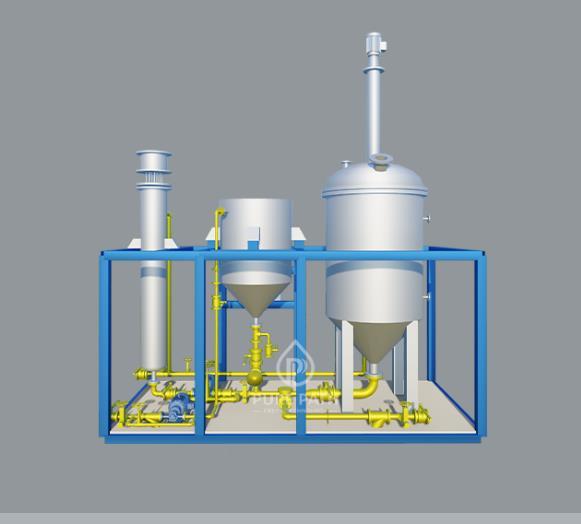Market Trends and Future Outlook for Lube Oil Blending

The global lubricant market is witnessing a significant transformation, driven by changing consumer demands, technological advancements, and regulatory pressures. At the forefront of this evolution is the lube oil blending plant, a vital component in the production of high-quality lubricants. As the demand for sustainable and high-performance lubricants grows, understanding the current market trends and future outlook for lube oil blending becomes crucial for stakeholders in the industry.
Current Market Trends
1. Increased Demand for Synthetic Lubricants
One of the most notable trends in the lube oil blending market is the rising preference for synthetic lubricants over conventional mineral oils. Synthetic lubricants offer superior performance, including better thermal stability, oxidation resistance, and enhanced protection for engine components. This trend is particularly evident in sectors such as automotive, industrial machinery, and marine applications. Consequently, lube oil blending plants are increasingly investing in advanced formulations to meet the growing demand for synthetic options.
2. Focus on Sustainability
Sustainability has become a key driver in the lubricant industry. Regulatory bodies worldwide are imposing stricter environmental regulations, pushing manufacturers to adopt more sustainable practices. Lube oil blending plants are responding by investing in environmentally friendly processes, such as using bio-based feedstocks and minimizing waste. The trend towards re-refined oils, which are produced from used oils through advanced recycling processes, is also gaining momentum. This not only conserves resources but also reduces the carbon footprint associated with lubricant production.
3. Technological Advancements
The integration of advanced technologies in lube oil blending plants is transforming the industry. Automation and digitalization are streamlining blending processes, improving efficiency, and reducing production costs. Technologies such as IoT (Internet of Things) are enabling real-time monitoring of blending operations, allowing for better quality control and faster response times. Moreover, the development of advanced analytical tools is enhancing product development and innovation, enabling manufacturers to create tailor-made lubricants that meet specific customer needs.
4. Rising Automotive Sector
The automotive industry remains a significant driver of demand for lubricants, particularly as vehicle manufacturing and sales continue to grow in emerging markets. As vehicles become more advanced, there is an increasing need for high-performance lubricants that can provide optimal engine protection and efficiency. Lube oil blending plants are strategically positioning themselves to cater to this demand by developing specialized formulations that align with the latest automotive technologies, such as electric vehicles (EVs) and hybrid models.
Future Outlook
1. Growth Opportunities in Emerging Markets
As urbanization and industrialization accelerate in developing regions, there is a substantial growth opportunity for lube oil blending plants. Countries in Asia-Pacific, Latin America, and Africa are expected to witness a surge in lubricant demand, driven by increasing automotive sales, industrial growth, and rising consumer awareness. Lube oil blending plants that can adapt to local market needs and invest in regional production facilities will be well-positioned to capitalize on these growth opportunities.
2. Innovation in Product Development
The future of the lube oil blending market will be characterized by continuous innovation in product development. Manufacturers are likely to focus on developing high-performance lubricants that offer enhanced protection and efficiency while minimizing environmental impact. The use of nanotechnology, for instance, is emerging as a promising avenue for improving lubricant performance. Lube oil blending plants will need to prioritize R&D investments to stay competitive and meet the evolving demands of customers.
3. Regulatory Compliance and Standards
As regulatory frameworks become more stringent, lube oil blending plants will need to ensure compliance with various environmental and quality standards. This includes adhering to specifications related to emissions, waste management, and product formulations. Investing in eco-friendly technologies and sustainable practices will not only help companies comply with regulations but also enhance their brand reputation and customer loyalty.
4. Digital Transformation
The digital transformation of the lubricant industry will continue to reshape operations at lube oil blending plants. Leveraging data analytics and AI can provide insights into customer preferences, market trends, and operational efficiencies. Embracing these technologies will enable manufacturers to make informed decisions, optimize production processes, and enhance customer service.
Conclusion
The lube oil blending market is at a pivotal juncture, driven by trends that emphasize sustainability, technological innovation, and changing consumer preferences. Lube oil blending plants play a crucial role in this landscape, and their ability to adapt to these trends will determine their success in the coming years. By embracing advanced technologies, focusing on sustainability, and investing in R&D, stakeholders in the lube oil blending industry can position themselves for growth in an increasingly competitive marketplace. The future outlook for lube oil blending is promising, with numerous opportunities for those willing to innovate and evolve.
- Art
- Causes
- Crafts
- Dance
- Drinks
- Film
- Fitness
- Food
- Games
- Gardening
- Health
- Home
- Literature
- Music
- Networking
- Other
- Party
- Religion
- Shopping
- Sports
- Theater
- Wellness


